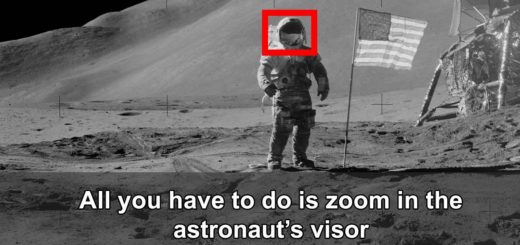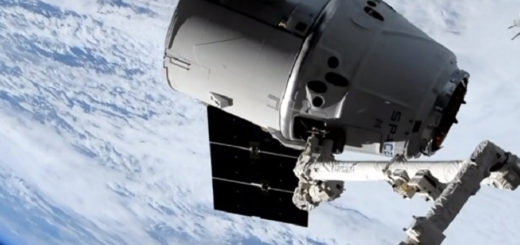NASA’s Astronaut Beach House Is a Little-known Gem of Space History

NASA’s historic Beach House today. It hasn’t changed much since 1963. NASA
Astronauts are driven, disciplined, physically fit and trained to solve complex problems in high-stakes situations. That doesn’t make them any less human. Sometimes, they just want to get away from it all — from the press, the physicians and the rigors of flight prep. You’ve got to make time to sharpen the saw.
But whether they like it or not, today’s space travelers are international celebrities. They’ve got the Midas touch: Everything about them is interesting and pretty much everyone wants to chat them up. So where on Earth can these people find a little seclusion?
Well since 1963, NASA’s kept a bungalow on the east Florida coast. Closed to the general public, it’s been a welcome retreat for generations of astronauts. Barbecues and bottle-signings are cherished pastimes at the hideaway. So are fond farewells; historically, this was the last place where many space-bound crews got to visit their families before launch time.
Here’s the story of the Kennedy Space Center Beach House and Conference Center (or “the Beach House” for short).
Rockets by the Sea
Florida and the NASA go a long way back. In 1961, it was decided that the agency would build a new launch center on Florida’s Merritt Island (technically a peninsula, by the way). Other sites were considered, including New Mexico’s White Sands Missile Range, where the first atomic bomb exploded 16 years prior.
Proximity to the Atlantic Ocean gave Merritt Island a strategic advantage; rockets launched there could streak across the ocean without disturbing populated areas. Latitude was another plus. Florida is reasonably close to the equator, where Earth’s rotation speed is at its fastest. When you set off a rocket in the Sunshine State, the vessel can save fuel by capitalizing on this principle.
Today, Merritt Island is the home of the Kennedy Space Center (KSC), a world-class spaceport. NASA wasn’t the first group to take an interest in this region, however. The U.S. military had been testing missiles on nearby Cape Canaveral since 1949. And then came the snowbirds. Vacation homes and other seaside properties sprouted like daisies in the postwar economy.
One piece of real estate was a two-story beach house constructed in 1962. Really, it was just another wood-framed building in the Neptune Beach subdivision — at first.
Partnering up with the Army Corps of Engineers, NASA bought the entire development in 1963 for $31,500 (a little more than $266,800 in today’s dollars). Neighboring houses and a gas station were cleared away, but this Plain Jane cottage escaped the wrecking ball.
As Isolated as Mars
Situated on government-owned land, the Beach House is well off the beaten path. In his 2006 memoir, astronaut Richard “Mike” Mullane said the place was as “isolated as Mars.”
Originally called the “Astronaut Training and Rehabilitation Building,” it started out as a home away from home, a place where crewmembers could get some shuteye on overnight stays. As the decades passed, the bungalow evolved into more of a hangout spot.
Astronauts could drop by individually or as a crew. Many also chose to take their spouses and families over. By design, though, this isn’t the easiest spot to access.
Space shuttle vet Robert Springer (who flew missions in 1989 and 1990) recalled that he and his crewmates used to borrow the key from a NASA staff member. Spontaneous visits were not encouraged. One day, payload specialist Samuel Durrance waltzed over with some colleagues — but forgot to give the administrators any advance notice. On their way back, the group was met by a S.W.A.T. team.
Guests had to play by the house rules: For example, young children were barred from the premises during astronaut quarantine periods.
Sand, Sharks and Cookouts
The Beach House has entertained its share of politicians and diplomats. To this day, it remains an active meeting place for government organizations.
But among space history buffs, this midcentury relic is remembered first and foremost as an explorer’s waystation. The stories that have unfolded here could fill a room — and they run the gamut from silly to sobering.
There was the time Springer and a crewmate went for a dip in the ocean, only to be met by a helicopter full of frantically-waving airmen. It turned out the swimmers had gotten a little too close to an enormous gang of sharks. Unaware of the danger, and oblivious to the warning, the astronauts waved back.
Rest assured, the sharks didn’t hurt anybody. Nor did they stick around for one of the Beach House’s greatest traditions: Prelaunch barbecues. Shortly before a space crew takes off, it’s customary for them to gather with family members at the cottage, where drinks are imbibed and choice meats enjoyed.
Sometimes, the guests get dinner and a show. Former KSC deputy director James A. “Gene” Thomas witnessed a cosplay prank at one of these beach parties. The mission being toasted that day was set to include Franklin Story Musgrave, a legendary astronaut who happened to be bald. Just for kicks, the rest of his crew decided to impersonate Musgrave at the barbecue. Everyone showed up with rubber latex sheets on their heads and nametags that read “Hi, I’m Story.”
Signature Moments in Wine
Another longstanding tradition at the Beach House involves alcohol. It’s customary for an outgoing crew to sign a wine bottle before they blast off. Official mission logos usually adorn the mementos. By now, a few decades’ worth of spaceflights have been chronicled on bottlenecks and wine labels.
Relegated to a tasteful cabinet display, the boozy artifacts make interesting décor. Other items photographed at the Beach House include a framed lighthouse painting, festive drums and some desktop coconut artwork.
Hurricane Matthew did a number on the bungalow in 2016, necessitating massive repairs inside and out. Once the kitchens, bathrooms, multiple walls and most of the second floor had been overhauled, the cottage reopened July 25, 2018.
We reached out to the Kennedy Space Center, which informed us that the Beach House isn’t currently being used by any astronaut crews. But who knows? Maybe that’ll change in the near future; NASA does want to “put the first woman and next man on the moon” by the year 2024.
No doubt future occupants will feel mixed emotions at the old Beach House. Most astronauts do, along with their loved ones. “As a spouse, you know you’re coming out here to say goodbye, and you don’t know if it’s the last time,” explained Mullane’s wife, Donna, in a 2010 interview with NASA.
Yet by many accounts, fear intermingles with excitement. From the bungalow, visitors have gotten some spectacular views of eager rockets: ships ready for launch and lying in wait at the space center.



 Creators of mankind
Creators of mankind Description of “Tall white aliens”
Description of “Tall white aliens” Where they came from?
Where they came from? About hostile civilizations
About hostile civilizations The war for the Earth
The war for the Earth “Tall white aliens” about eternal life
“Tall white aliens” about eternal life Video: “Nordic aliens”
Video: “Nordic aliens” Aliens
Aliens Alien encounters
Alien encounters The aliens base
The aliens base UFO
UFO Technology UFO
Technology UFO Underground civilization
Underground civilization Ancient alien artifacts
Ancient alien artifacts Military and UFO
Military and UFO Mysteries and hypotheses
Mysteries and hypotheses Scientific facts
Scientific facts


















